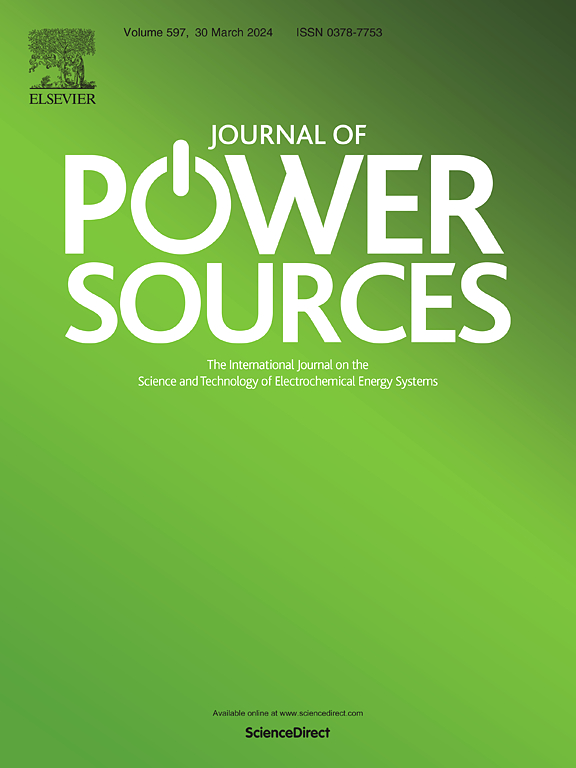Selective electro-reduction of CO2 into methane and formic acid using efficient bimetallic and bimetallic oxide electrocatalysts in liquid-fed electrolyzers
IF 8.1
2区 工程技术
Q1 CHEMISTRY, PHYSICAL
引用次数: 0
Abstract
CO2 valorization via bicarbonate electrolysis (BCE) is a promising and emerging technology geared towards ‘green’ chemical synthesis. The development of active and facile electrocatalyst layers is vital for establishing efficient electrolyzers. Bimetallic (Zn(x)/Cu(100-x)) and bimetallic oxide (ZnOx/CuO(100-x)) catalyst layers with different ratios of the respective components were electrodeposited onto pre-treated copper (Cu) mesh as active cathodic electrodes for zero-gap BCE electrolyzers. It was found that the selectivity and electrochemical performance of the as-synthesized catalysts strongly depends on the composition and nature of the formed phases of the deposited catalyst layers. This achieved a maximum Faradaic Efficiency for methane (FECH4) of 82 % at 160 mA cm⁻2 and for formic acid (FEHCOOH) of 81.3 % at 140 mA cm⁻2 using the bimetallic catalysts while maintaining H2 evolution at < 16 %. Similarly, the bimetallic oxides exhibited slightly higher catalytic conversion of CO2 for FECH4 (84.3 %) at 100 mA cm⁻2, and FEHCOOH (81.8 %) at 140 mA cm⁻2, while keeping the H2 evolution at <16 %. The high inter-phasal area of the materials' mixed phases promoted a high reaction rate, which translated into a maximum recorded partial current density for CH4 (jCH4) and HCOOH of 160 mA cm−2 and 116.5 mA cm−2, respectively.

求助全文
约1分钟内获得全文
求助全文
来源期刊

Journal of Power Sources
工程技术-电化学
CiteScore
16.40
自引率
6.50%
发文量
1249
审稿时长
36 days
期刊介绍:
The Journal of Power Sources is a publication catering to researchers and technologists interested in various aspects of the science, technology, and applications of electrochemical power sources. It covers original research and reviews on primary and secondary batteries, fuel cells, supercapacitors, and photo-electrochemical cells.
Topics considered include the research, development and applications of nanomaterials and novel componentry for these devices. Examples of applications of these electrochemical power sources include:
• Portable electronics
• Electric and Hybrid Electric Vehicles
• Uninterruptible Power Supply (UPS) systems
• Storage of renewable energy
• Satellites and deep space probes
• Boats and ships, drones and aircrafts
• Wearable energy storage systems
 求助内容:
求助内容: 应助结果提醒方式:
应助结果提醒方式:


